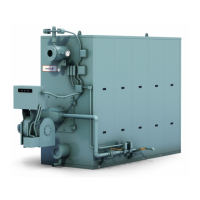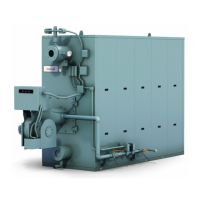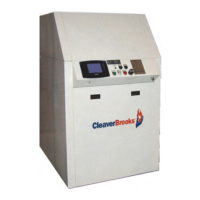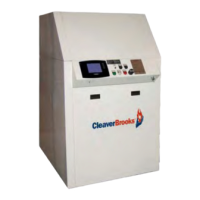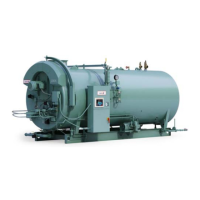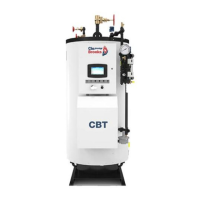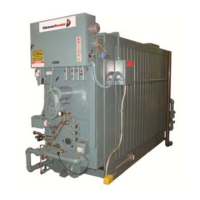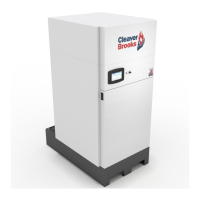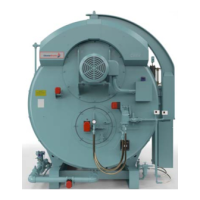750-177 5-1
The boiler should be filled with water to the proper operating
level using water of ambient temperature. Be sure that treated
feedwater is available and used. In heating applications, the
entire system should be filled and vented. Refer to Chapter 3
for water requirements. On a steam boiler, open the vent
valve to vent air displaced during filling. Leave the vent valve
open until the escape of steam is noted after the burner is
operating.
!
DANGER
WARNING
Prior to firing a boiler, be sure that
discharge piping from safety valves or relief
valves, and discharge piping from all
blowdown and drain valves, is piped to a
SAFE point of discharge, so that emission
of hot water or steam cannot possibly cause
injury. Failure to follow these instructions
could result in serious personal injury or
death.
Check all linkage for full and free movement of the damper
and metering valves and cams. The check can be done by
loosening the linkage at the damper motor connecting arm
and manipulating the linkage by hand.
Check for rotation of all motors by momentarily closing the
motor starter or relay. The blower impeller rotation is
counter-clockwise for the ProFire, when viewed from the
motor side of the burner (see Figure 5-1).
Note: All work on the burner should be
performed by qualified persons
knowledgeable in safe practices and
applicable codes. Wiring should be in
accordance with the National Electrical
Code (NEC).
CHAPTER 5
STARTING AND OPERATING
INSTRUCTIONS
A. GENERAL PREPARATION FOR
INITIAL STARTUP
Note: If the boiler is not equipped with a
ProFire burner. Please refer to the specific
Operation and Maintenance manual for the
burner supplied.
Instructions in Chapter 5 are all based upon installation being
complete and all electrical, fuel, water and vent stack
connections are made.
The operator should be familiar with the burner, boiler, and
all controls and components. To quickly locate and identify
the various controls and components mentioned in the
following paragraphs, refer to the illustrations and the
contents of Chapters 1, 2 and 3. Instructions for adjusting
major components are given in Chapter 6 this should be
reviewed prior to firing. The wiring diagram should also have
been studied, along with the firing sequence outlined in
Chapter 4.
!
DANGER
WARNING
It is recommended that the starting
instructions be read completely until they
are thoroughly understood, before
attempting to operate the boiler, rather than
performing each operation as it is read for
the first time. Failure to follow these
instructions could result in serious
personal injury or death.
Verify supply of fuel and proper voltage. Check for blown
fuses, open circuit breakers, dropped out overloads, etc.
Check reset of all starters and controls having manual reset
features. Check the lockout switch on the programmer and
reset if necessary.
A. General Preparation for Initial Startup . . . . . . . . . . 5-1
B. Startup Procedures . . . . . . . . . . . . . . . . . . . . . . . . . 5-5
C. Burner Adjustments, Single Fuel Natural Gas . . . . 5-7
D. Burner Adjustments, Single Fuel Oil Fired . . . . . 5-11
E. Burner Adjustments, Combination . . . . . . . . . . . . 5-14
F. Startup, Operating and Shutdown - All Fuels . . . . 5-19
G. Control, Operational Tests and Checks . . . . . . . . . 5-20

